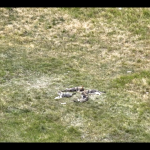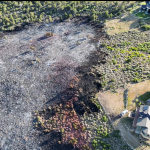Richards: Start an environmental impact study, please
Aspen resident

This may be hard to accept — but you need to start an environmental impact study (EIS) as soon as possible (ASAP). This isn’t an academic debate; it’s not about the political power of who sits at the council table. Colorado Highway 82 is a matter of mobility and public safety. Part of Highway 82 is within Aspen city limits, another 80 miles is not and 70% or more of Aspen’s workforce lives on the “other side” of Castle Creek.
The Colorado Department of Transportation (CDOT) and the Federal Highway Administration (FHWA) work within a legal framework on all their projects from planning to funding through construction and later maintenance of their assets. They consider the needs of the traveling public — their safety first and then other considerations: travel patterns, future growth projections, mobility options, connectivity with destinations, spillover effects on other roads, pedestrian safety, construction cost, mitigation and staging impacts, least disruptive property condemnations, and lengthy legal challenges.
CDOT and FHWA have obligations to use their dollars wisely and count the billions of dollars they have invested into Highway 82 from Glenwood to its terminus in Lake County. Transportation dollars are highly competitive; cost, benefit, practicality, and feasibility are reviewed at state and federal levels.
Regardless of vote this November, other than approval of the ’98 Entrance to Aspen (ETA) Record of Decision (ROD) for a Preferred Alternative (PA) a new EIS will be required. Unlike all other ideas for the entrance, the ’98 PA only requires a re-evaluation process, not an EIS because 75% of it has already been built with federal approval and mitigation. Seeking funding to build it could begin now.
But if Aspen City Council’s goal has shrunk to just replacing the two-lane Castle Creek Bridge with a two-lane bridge, an EIS will be required to determine the least impactful and most beneficial way of replacing a two-lane bridge with a two-lane bridge.
An EIS must ask — what is the fastest way to build and what way will cost the least? Which offers a redundant wildfire emergency evacuation route after construction? Which approach disrupts transit and the traveling public the least? Which construction method is most difficult to stage? Understand CDOT and the FHWA cannot justify taking the family’s home “under the bridge” or other property along the route without the legal justification of a new EIS ROD PA that answers those and other “real impact” questions.
Additionally, the National Environmental Policy Act (NEPA) doesn’t allow separating construction of permanent infrastructure from future infrastructure components known to be needed to make the alternative work. CDOT and FHWA have been to this rodeo before. “Trying to bifurcate” the known needs and impacts to make a three-lane remotely viable after construction was detailed in the Jacobs Engineering report.
Segmentation of the Castle Creek Bridge as only “one piece of Highway 82 infrastructure” — which in totality needs to provide redundant wildfire emergency evacuation routes, reduce head-on collisions with lane separation, and enhance mass transit services in keeping with the mobility goals memorialized in the ’98 PA — would lead to lengthy lawsuits that CDOT only avoids with an independent unbiased NEPA EIS.
Same goes for the “split shot” and its variations or new alternatives that might solve the Highway 82 equation in a way that makes everyone happy. The Friends of Marolt will, of course, sue again if a new EIS ROD PA uses the Marolt property. Federal courts take their time, and delay is victory for some.
So please just start an EIS now. Personally, I hope the PA is approved in November, but it may not, given the misinformation and money the Friends of Marolt will spend and that some council members hope for its defeat.
Sixteen months have passed since this council took office — traffic was the worst in memory this summer. They inherited a $10 million projected budget in 2023, so please whatever Entrance you want start an EIS now, get the process moving. A “no” vote on the PA simply does not imply a NEPA-free approval of else.
Rachel Richards is a former Aspen City Council member and is currently an Aspen resident.






